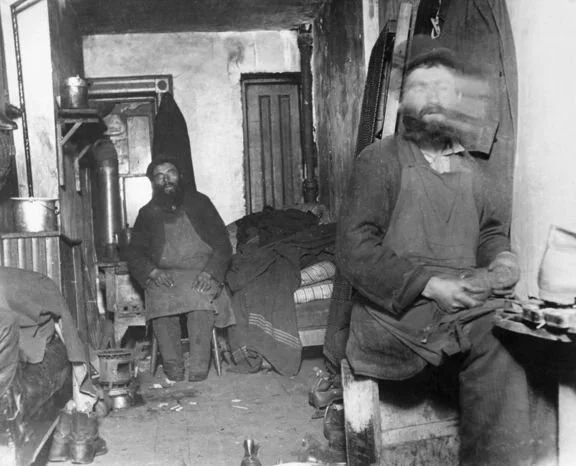impact on society
the photo changes how we see
Photography continues to change our impressions of each other and our life experiences.
Portraiture
1840s
This daguerrotype of Mother Albers’ honest and forthright character study exemplifies the feeling tone and the detail achievable, even with relatively long sitting times, from 2 minutes, or even 10-20 minutes. Light hitting the subject, focused by the camera onto the metal plate caused the chemicals to change, creating an image.
"Mutter Albers", die Gemüsefrau der Familie Stelzner, (Mother Albers, The Family Vegetable Woman), Hamburg, Carl Ferdinand Stelzner, 1845
Creating Celebrity
late 1800s
Gum printing, also known as gum dichromate, is a “19th century photographic process wherein a mixture of gum arabic, photo-sensitive dichromate, and watercolor pigment is brushed on paper, dried, and exposed to light under a large negative.”
As photo techniques developed, so did ways of presenting oneself. The portrait could become a ‘calling card,’ as one’s image would be crafted to reflect skills, personality, or invented persona.
Knabe mit Geige (Lothar Perscheid), Boy with Violin, Germany, Nicola Persheid, 1916
Fine Art
1899
Heinrich Kuhne was one of the first photographers to combine methods to achieve a sensitive, painterly effect to tell a story with the attitude of a fine artist.
Heimtrieb der Schafherde, Heinrich Kuhne, 1899
Memory
1900
As the implications of capturing a glimpse in time began to be realized, the photographer continued to expand his or her treatment and choice of subjects.
Youth, nature and the passage of time take on new meaning in the context of real life versus photo print. Concepts such as ‘when,’ ‘then,’ and ‘now’ take on new meaning, depending on whether a moment is defined by human memory or mechanical documentation.
Schäferin am Wattenmeer, aus der Mappe Aus Schleswig-Holstein, Wilhelm Dreesen, 1900
Civil War, USA
1863
Photo_Civil War USA, Fredericksburg-battery, Virginia, 1862
Landscape
1873
As the US attempted to unify after the Civil War between north and south, photographs of land surveys helped to romanticize the view of the west.
Photographers were sent by the Federal government in geographical and geological surveys of territories of areas west of the 100th meridian.
Ancient ruins of the Anasazi people dated to 1200 AD were documented among the land formations.
Ancient ruins, 1200AD, in the Cañon de Chelle [Chelly], New Mexico, photo George Wheeler, 1873
Photojournalism
1888
Jacob Riis was a journalists, photographer, and humanitarian. He was an early adopter of flash photography and used the new technology to expose the impoverished living conditions of the European immigrants living in New York City. These photographs and many others he would take during his life helped to change public policy toward supporting to greater humanitarian aspects of our culture.
Document
1904
The photo became a means to record people, actions and the surroundings as life changed for many in the United States. The Hopi people lost lands in 1882 in the Southwest, and continue in the present to reinvent ways to keep traditional methods in use.
The Peki Maker, Hopi Woman, Southwest, photog Edward S Curtis, 1906
Injustice
1916
Callie Campbell, 11 years old, picks 75 to 125 pounds of cotton a day, and totes 50 pounds of it when sack gets full. "No, I don't like it very much." photographer, Lewis W. Hine.
World War I
circa 1918
Photo_WWI, US Infantry & machine gun men assigned in trenches, circa 1918
Farm Security Administration
1936
Photo FSA Internal Migrant Kern County Dorothea Lange 1936
The Big City
1938
"Penn Station, Interior, Manhattan" The New York Public Library Digital Collections. 1935 - 1938.
Truth or Hoax?
1937
World War II
1943
African American seamen delivering shells and loading the anti-aircraft gun aboard a vessel on the Atlantic patrol 1941-45
Culture
1947
Charlie Parker, Miles Davis, Max Roach, at the Three Deuces, New York, 1947, Gottlieb Collection
Modern artist
1950
Photo Pollock and Brook n Lake, 1950 Smithsonian
Crafting Identity
1960’s
Person on bicycle, Main_Street_looking_west_Elizabeth_City_North_Carolina, Ektachrome, Jack Taylor, 1957
Viet Nam War
1955-75
Vietnam War, Operation Bang Dong. PFC Fred L. Greenleaf, irrigation canal 1967 photog Robert C Lafoon, National Archives
Interpretation
1950-present
As colorful photo documentary images appeared in Life and Look Magazines, and National Geographic glimpses of the moment were still to be read in context for bias, point of view or mechanical limitations.
Sugar cane workers resting, Rio Piedras, Puerto Rico (LOC) 1941
NASA
1965
Astronaut Edward H. White during first EVA, 1965
Science
2015
In-situ_hybridisation_on_chicken_embryo, Simone Castellana, 2015, microscope and iphone.jpg
Collage
Fotoassemblage van vliegtuigen. In lijst. 1991. Jan Punter, Coda Museum
Anderson, Christina Z., Gum Printing: A Step-by-Step Manual
The Miriam and Ira D. Wallach Division of Art, Prints and Photographs: Photography Collection, The New York Public Library. "Suspension Bridge, Pittsburgh." The New York Public Library Digital Collections. 1850 - 1930. http://digitalcollections.nypl.org/items/510d47e0-a6fc-a3d9-e040-e00a18064a99
Auckland Exhibition Grounds, 1914, Auckland, by Robert Walrond. Purchased 1999 with New Zealand Lottery Grants Board funds. Te Papa (A.018178)






















